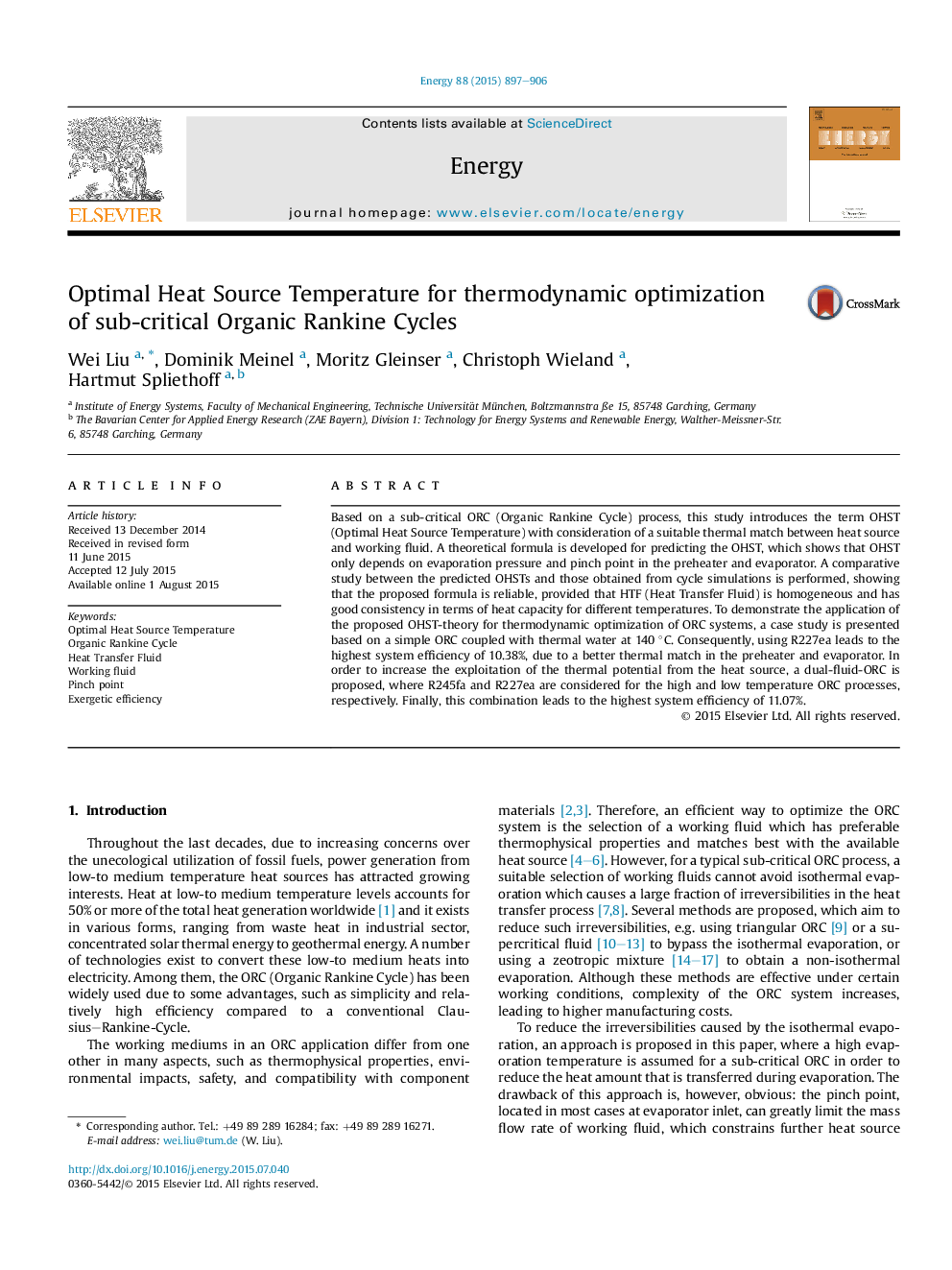| Article ID | Journal | Published Year | Pages | File Type |
|---|---|---|---|---|
| 1732200 | Energy | 2015 | 10 Pages |
•Optimal Heat Source Temperature is investigated for the sub-critical ORC (Organic Rankine Cycle).•A theoretical formula is proposed to predict OHST (Optimal Heat Source Temperature).•A comparative study shows the proposed formula is accurate and reliable.•Significances of OHST in optimizing the sub-critical ORC are discussed.•A case study is presented, showing the application of the proposed OHST theory.
Based on a sub-critical ORC (Organic Rankine Cycle) process, this study introduces the term OHST (Optimal Heat Source Temperature) with consideration of a suitable thermal match between heat source and working fluid. A theoretical formula is developed for predicting the OHST, which shows that OHST only depends on evaporation pressure and pinch point in the preheater and evaporator. A comparative study between the predicted OHSTs and those obtained from cycle simulations is performed, showing that the proposed formula is reliable, provided that HTF (Heat Transfer Fluid) is homogeneous and has good consistency in terms of heat capacity for different temperatures. To demonstrate the application of the proposed OHST-theory for thermodynamic optimization of ORC systems, a case study is presented based on a simple ORC coupled with thermal water at 140 °C. Consequently, using R227ea leads to the highest system efficiency of 10.38%, due to a better thermal match in the preheater and evaporator. In order to increase the exploitation of the thermal potential from the heat source, a dual-fluid-ORC is proposed, where R245fa and R227ea are considered for the high and low temperature ORC processes, respectively. Finally, this combination leads to the highest system efficiency of 11.07%.
